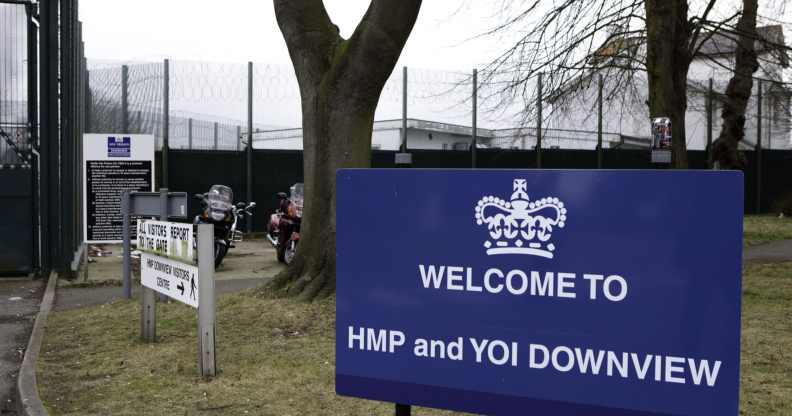Inmate launches legal bid to force trans women into men’s prisons after claiming she was sexually assaulted

The entrance to HMP Downview, where the woman bringing the court case is being held. (In Pictures Ltd./Corbis via Getty Images)
The entrance to HMP Downview, where the woman bringing the court case is being held. (In Pictures Ltd./Corbis via Getty Images)
An inmate at a women’s prison who claims she was sexually assaulted by a trans inmate has launched a court fight to force trans women to be detained in men’s prisons.
The judicial review against the government began today (28 October) at London’s Royal Courts of Justice, and will also challenge the existence of a wing at HMP Downview, near Banstead in Surrey, where transgender women are held, according to The Times.
The woman, currently an inmate at Downview, claims that the trans woman who assaulted her in prison has a conviction for rape.
Her lawyers will argue that placing transgender women who have been convicted of sexual or violent offences against women in women’s prisons is in breach of the Equality Act 2010.
They will argue that equalities law is breached even in cases when a trans woman has had her gender legally recognised under the Gender Recognition Act.
The unnamed female inmate is being supported by a new anti-trans campaign group called Keep Prisons Single Sex, which launched on Twitter in July 2020 and explicitly denies the existence of transgender people on its website, under a section called: “Can a man really become a woman?”
“The clear answer to this is no, he cannot,” the KPSS page continues. “No matter how he presents himself, what he wears, what he believes about himself, or what changes he makes to his body through surgery or medical treatment, a man remains a man. A man cannot become a woman. (Nor can a woman become a man.).”
The hearing is expected to last two days.
Trans women in prison: What do we know?
There are 130 trans women in the UK prison system and 119 of them are housed in men’s prisons, according to a 2019 Ministry of Justice report. Eleven are held in women’s prisons.
The Ministry of Justice also reported 20 trans men – all of whom are in women’s prisons.
Trans people who don’t have their gender legally recognised will be housed in the prison estate corresponding to the gender they were assigned at birth, not their true gender. Trans inmates without legal gender recognition can apply for an individual case review to be considered for transfer to a prison corresponding to their gender identity, but the process is slow, bureaucratic and often unsuccessful.
Legal gender recognition is the process by which trans people can update the gender marker on their birth certificate, governed by the Gender Recognition Act. Since it came into force in 2004, just 4,910 trans people have used the GRA to gain legal gender recognition – out of an estimated population of half a million trans people in the UK.
Figures released earlier this year stated that out of 122 reported sexual assaults in women’s prisons in the past decade, five were perpetrated by trans inmates.
Meanwhile, the MOJ said that 11 transgender women prisoners were assaulted in prisons in England and Wales last year.
This means that there is a reported sexual assault in a women’s prison committed by a trans inmate once every two years, on average, whilst a trans woman is the victim of a sexual assault in a men’s prison nearly every month.

